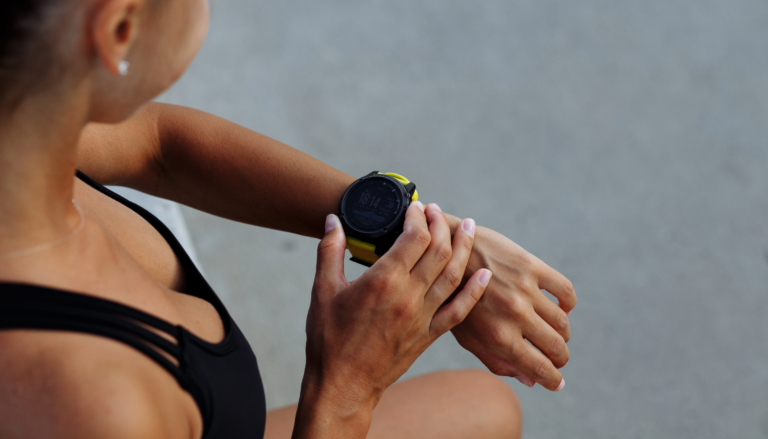Fashion Gets a High-Tech Makeover: The Rise of Tech-Enhanced Activewear
Meta description: This article explores how technology is transforming activewear and athletic apparel, making it smarter, more functional, and more sustainable.
Introduction
The activewear and athletic apparel industry has seen explosive growth in recent years, fueled by rising health consciousness and the athleisure trend. As more people incorporate fitness into their lifestyles, they are demanding more from their activewear – greater comfort, improved performance, and cutting-edge style.Brands and retailers are turning to technology to take activewear to the next level. We’re seeing the rise of “tech-enhanced active fashion” – clothing and accessories embedded with advanced tech to provide functionality far beyond standard performance gear. From smart sensors to 3D printing, innovations in materials science, AI recommendations, and more, technology is revolutionizing this market.This article will explore some of the most exciting developments in tech-enhanced active fashion and showcase how they are shaping the future of athletic apparel and gear. Let’s dive in!
Key Tech Enhancing Activewear
Activewear brands today have a vast array of technologies at their disposal to make their products smarter and more functional. Here are some of the most impactful tech advancements enhancing active fashion right now:
Smart and Adaptive Textiles
- Shape memory materials – Textiles like Nike’s Flyknit can remember and return to their original shape, delivering consistent compression and support over time.
- UV protection – Fabrics utilize mineral-based treatments that don’t wash out, offering sun protection while maintaining breathability.
- Temperature regulation – Materials leverage conductive yarns to absorb and retain body heat in cold conditions and release heat when hot.
- Moisture wicking – Fabric coatings and treatments actively pull moisture away from the skin to the surface to evaporate.
- Antimicrobial – Silver ions or chitosan biopolymers are embedded into the fabric to prevent the growth of odor-causing bacteria.
- Compression – Strategically designed knits apply gradient pressure to muscles to improve circulation and stabilize joints.
Sensor Technology and Connectivity
- Activity tracking – Garments have embedded sensors to track fitness metrics like heart rate, calories burned, sleep quality, and more.
- Haptics – Clothing with haptic feedback vibrates to correct form if improper technique is detected during activity.
- Touch/gesture control – Conductive stitching allows wearers to control connected tech through swiping and tapping garments.
- Biometrics monitoring – Sensors for pulse, temp, hydration levels, and other biometrics give real-time feedback about body performance.
- Environmental monitoring – Detect UV exposure, pollution levels, allergens, and other environmental factors.
3D Printing and Customization
- 3D knitting – Seamless 3D knitting technology creates custom, formfitting garments tailored to exact body measurements.
- 3D printing – Shoes, pads, braces, helmets, and more can be 3D printed to match individual anatomies.
- Custom embroidery/lasering – Add personalized designs, names, numbers, and more.
- On-demand manufacturing – Automated production allows custom gear to be made upon order.

The Tech-Enhanced Activewear Market
The global activewear market already generates over $380 billion in sales every year and is projected to reach $585 billion by 2026.While performance has always been the main priority for activewear, today’s consumers also demand style, comfort, functionality and sustainability. This makes incorporating tech-based enhancements into athletic apparel especially compelling – it elevates basic performance gear to better meet consumer expectations.Here are some key factors driving adoption of tech in the activewear space:
- The growth of athleisure – With sporty styles dominating everyday fashion, versatile activewear that transitions seamlessly from the gym to the streets is in high demand.
- Health & fitness focus – More consumers are tracking health metrics and looking to clothing to optimize their workouts and accelerate their fitness goals.
- Demand for personalization – 72% of consumers are interested in customized activewear tailored to their bodies, style and performance needs.
- Sustainability – Eco-conscious consumers want clothing made sustainably from recycled materials and with a reduced carbon footprint.
- Smart capabilities – Wearers want garments to automatically track fitness data, connect to apps, and offer real-time performance feedback.
Leading Innovations in Tech-Enhanced Active Fashion
Let’s explore some breakthrough examples of technologically enhanced activewear hitting the market:
Smart Yoga Apparel by Wearable X:
This smart yoga collection embeds stretchable sensors into the fabric to track pose positions and alignment precision during practice. The accompanying app analyzes the data in real time, providing vibrational feedback when improper form is detected so wearers can instantly self-correct.
Adaptable Running Shoes by Nike:
Nike created a concept shoe with 3D-printed adaptive cushioning that automatically adjusts its shock absorption and stiffness during a run, optimizing comfort and responsiveness for each runner’s size, speed and gait.
Carbon Fiber Compression Tights by Vollebak:
These high-tech leggings feature carbon fiber fabric originally developed for aerospace applications. This offers exceptional compression and muscle support while also being extremely lightweight, elastic and breathable during intense training.
Anti-Bacterial Sports Bras by Under Armour:
Under Armour’s sports bras utilize anti-odor technology and copper-infused fabrics that neutralize bacteria on contact and prevent odor-causing microbes from growing on the skin-tight garment even after repeated intense workouts.
Biometric Smartwatches by Whoop:
Whoop tracks heart rate variability, ambient temperature, accelerometry and more to provide comprehensive performance optimization recommendations – like ideal training loads and recovery times – so athletes can properly tailor their training.

The Future of Tech-Enhanced Activewear
Technology will continue elevating the performance and functionality of activewear while also making it more sustainable. Here are some exciting innovations on the horizon:
- AI design & manufacturing – AI will forecast trends, design collections and automate production for faster, localized manufacturing with less waste.
- AR/VR for custom gear – Virtual try-on tech will allow online shoppers to visualize custom sizes and designs before production.
- Power-generating textiles – Kinetic energy-harvesting fabrics will convert movement into usable electricity to power sensors and electronics.
- Complete digital integration – Activewear could integrate edge computing to process data and interact in real-time with the surrounding smart gym equipment and wearable tech ecosystem.
- Circular business models – Brands will increasingly offer subscriptions, rentals and resale of tech-enhanced activewear to increase usage and reuse.

Conclusion
Technology is truly transforming activewear and athletic apparel, making it smarter, more functional and personalized while also improving sustainability. Sensor-laden smart fabrics, 3D printing customization, AI recommendations and more will soon make high-tech performance enhancing clothing standard issue for amateur fitness enthusiasts and professional athletes alike.Brands that leverage these innovations stand to tap into booming consumer demand for versatile, stylish and effective active fashion. While tech integration requires initial investment, those who embrace it have an opportunity to disrupt the activewear market by meeting customer needs better than ever before. The future of technologically enhanced athletic apparel shines bright – and we can’t wait to see what cutting-edge innovations brands debut next!






